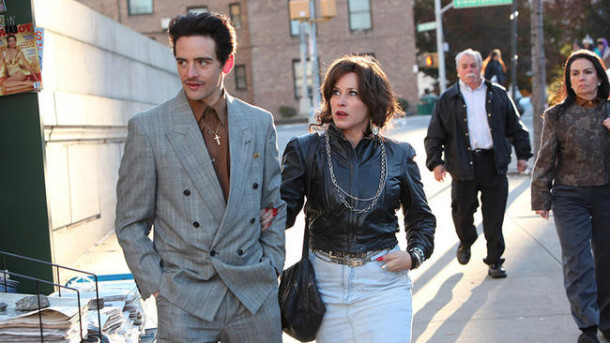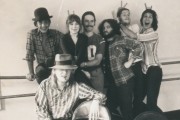 The most underrated of all the Martin Scorsese-Robert De Niro collaborations is 1982’s The King of Comedy, a wickedly brilliant dark comedy about the dangers of celebrity hero worship and of those who are delusional about their own levels of fame. It’s not a surprise that Scorsese lent his name as executive producer to The Wannabe, a film that touches on the same themes but in the genre that made Scorsese famous, the gangster film. Vincent Piazza — who starred as famed gangster “Lucky” Luciano on a series Scorsese likewise served as an executive producer, Boardwalk Empire — plays the Rupert Pupkin of organized crime in The Wannabe.
The most underrated of all the Martin Scorsese-Robert De Niro collaborations is 1982’s The King of Comedy, a wickedly brilliant dark comedy about the dangers of celebrity hero worship and of those who are delusional about their own levels of fame. It’s not a surprise that Scorsese lent his name as executive producer to The Wannabe, a film that touches on the same themes but in the genre that made Scorsese famous, the gangster film. Vincent Piazza — who starred as famed gangster “Lucky” Luciano on a series Scorsese likewise served as an executive producer, Boardwalk Empire — plays the Rupert Pupkin of organized crime in The Wannabe.
Thomas Greco (Piazza) is a small-time crook who is obsessed with the mafia and classic mafia movies. It’s 1992, and Thomas commits himself to finding a way to get his hero, mob boss John Gotti (Joseph Siravo), acquitted for the laundry list of crimes that he is being tried for in federal court. Thomas tries to dress and look the part of a wise guy, but he sticks out like a sore thumb in the era where most mob muscle wore track suits. However, he gets the attention of Rose (Patricia Arquette), an older woman who believes that Thomas has a bright future. The two then become wrapped up in their own fantasies of success as they set out to become the big shots they imagine themselves to be. As Gotti’s empire crumbles, Thomas aims his misguided anger at Curtis Sliwa (Daniel Sauli), the founder of the Guardian Angels and a public advocate against the mafia and everything Thomas and Rose believe in.
Writer/director Nick Sandow (who also appears in the film as Anthony) based the film on true events, and though he’s a mafia film veteran (he has a long history playing gangsters, including on Boardwalk Empire), he was careful to make sure The Wannabe doesn’t just ape the best of the genre. After all, this is a story about someone who isn’t a wise guy, and the entire plot of the theme revolves around Thomas and Rose trying to be the mafia power couple that they aren’t. The fact that Thomas’ mustache is never fully grown in and that his suits are always too big are clever visual indications that he’s just trying to play a part that he’s seen in classic Warner Bros. gangster films. Sandow brings his own style to the film, including with a beautifully shot sequence depicting the 1985 Sparks Steak House mafia hit that is the highlight of the film.
This “wannabe” premise begins to lose steam about halfway through the film. Once the pair starts to sink down a path of addiction and greed, many of the sequences become repetitive — there are only so many ways you can show two people doing drugs before it seems like outtakes from Requiem for a Dream. It’s almost like Sandow knew how the first half-hour of the film would go and how the final minutes would play out, but he wasn’t sure what to do in the middle forty-five minutes except maintain a steady depiction of addiction. It’s a bit of a waste of Arquette, who is fine in her role but could’ve contributed so much more knowing her depth. There’s also a side-plot involving David Zayas as as a newscaster that doesn’t seem to go anywhere.
Even with the flawed middle section, Piazza’s multifaceted portrayal of a loser who is a mob boss in his own mind makes The Wannabe worth a watch. It may mix fact and fiction, but Thomas and Rose are the type of wannabes that seem even more prevalent in society today than in 1992.
(Finally, cheers to Sandow for filming a scene outside Malverne Cinema in Malverne, Long Island and putting Cry Cry Again on the marquee — Larry David would be proud!)

















Recent Comments